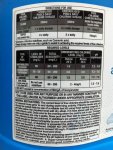Hi There,
new member here from Australia. I've visited the forum a few times over the years to check out suggestions on reliable equipment and found it a very useful place. I thought I should probably join up as I may be able to contribute sometimes.
I'm a chemist by profession, anayltical rather than pharmaceutical, and work primarily in water treatment solutions in mining and municipal waste water treatment.
I've been working professionally in this area for over 20 years, so pool water chemistry is nothing new to me, but as I've spent many years explaining concepts like alkalinity and calcite saturation to others, I can say that the explanations of pool water chemistry and the advice provided here, are clear, sensible and offer a straight forward method for anyone to keep on top of pool maintenance. It really isn't rocket science, but there are certainly traps for new players and those are well covered here. Well done to the team here at TFP.
A quick disclaimer, the company I work for does manufacture a huge range of chemicals and would be a supplier to some of the companies formulating solutions to the swimming pool and spa industry. We however tend to deal in very large volumes so would never be dealing with the public. In fact most of our business to pool supply companies would be small enough to be managed through distributors so I have no direct ties to any company in the swimming pool industry.
cheers,
AusJohn
new member here from Australia. I've visited the forum a few times over the years to check out suggestions on reliable equipment and found it a very useful place. I thought I should probably join up as I may be able to contribute sometimes.
I'm a chemist by profession, anayltical rather than pharmaceutical, and work primarily in water treatment solutions in mining and municipal waste water treatment.
I've been working professionally in this area for over 20 years, so pool water chemistry is nothing new to me, but as I've spent many years explaining concepts like alkalinity and calcite saturation to others, I can say that the explanations of pool water chemistry and the advice provided here, are clear, sensible and offer a straight forward method for anyone to keep on top of pool maintenance. It really isn't rocket science, but there are certainly traps for new players and those are well covered here. Well done to the team here at TFP.
A quick disclaimer, the company I work for does manufacture a huge range of chemicals and would be a supplier to some of the companies formulating solutions to the swimming pool and spa industry. We however tend to deal in very large volumes so would never be dealing with the public. In fact most of our business to pool supply companies would be small enough to be managed through distributors so I have no direct ties to any company in the swimming pool industry.
cheers,
AusJohn



